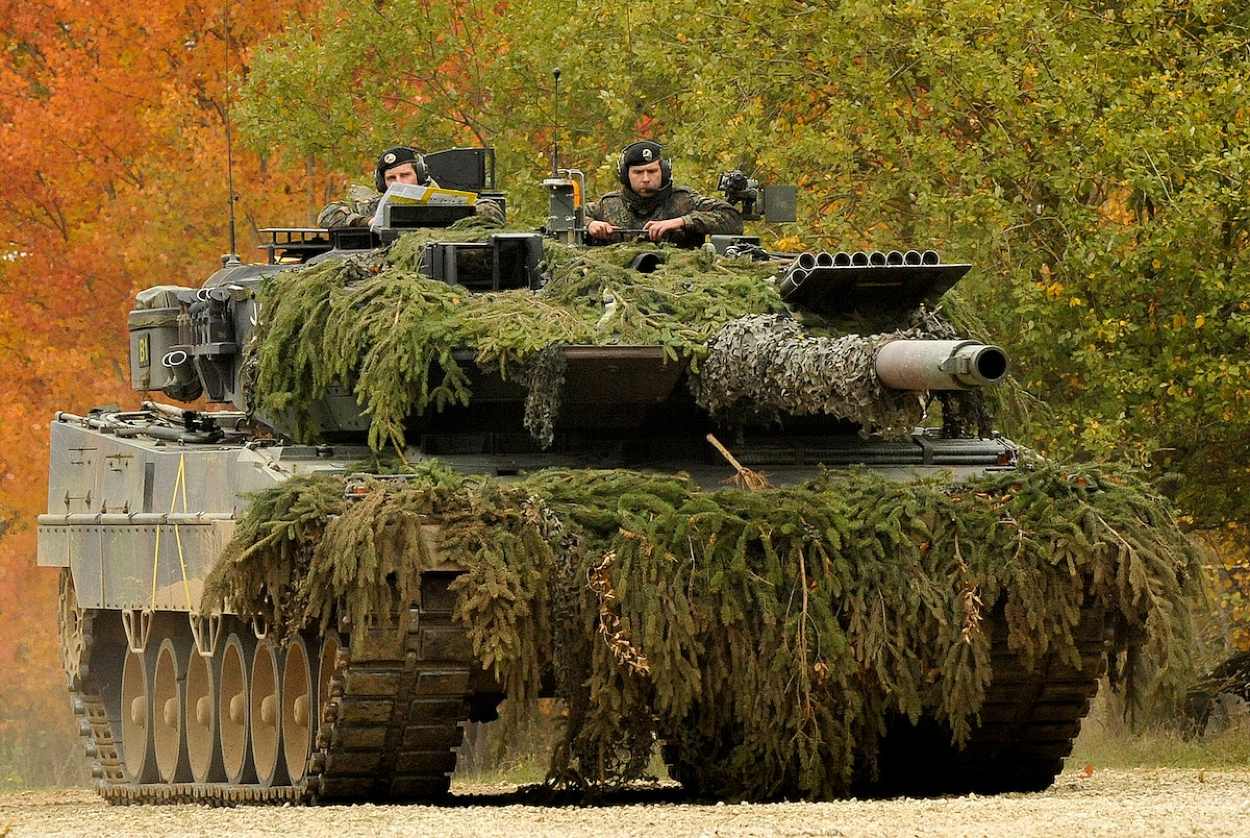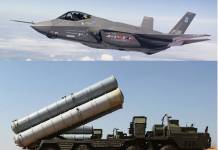After Poland announced that it was willing to transfer some of its Leopard Main Battle Tanks (MBTs) to Ukraine, securing approval from Germany was the only impediment.
F-35 Fighters Could End ‘Drought’ For Canada; Ottawa Says Will Help Resolve Canada’s Military Recruitment Woes
However, in a new development, Berlin has signaled that it does not intend to veto the much-needed transfer to Kyiv.
On January 12, German Vice Chancellor Robert Habeck said that Germany should not block Poland’s request regarding a transfer of a Leopard tank to Ukraine.
Habeck hinted at approval by saying, “Germany should not stand in the way when other countries make decisions to support Ukraine, regardless of what decision Germany makes.”
Breaking: Vice Chancellor Robert Habeck said Germany should not block Poland's request (if one is made) to send its Leopard tanks to Ukraine.
"Germany should not stand in the way when other countries make decisions to support Ukraine, regardless of what decision Germany makes." pic.twitter.com/Ef5SdzSvYu
— Hans von der Burchard (@vonderburchard) January 12, 2023
However, Germany has essentially put the ball in Poland’s court by specifying that it had not yet received a request from Poland to carry out the transfer.
Standing in front of the Marder Infantry Fighting Vehicle (IFV) that Germany is delivering to Kyiv, the German Defense Minister Christine Lambrecht said: “There are no requests from Poland or other nations for [authorizing Leopard] deliveries” to Ukraine.
More indication that Berlin is putting the ball in Warsaw's court:
"There are no requests from Poland or other nations for [authorizing Leopard] deliveries" to Ukraine, Defense Minister Christine Lambrecht said Thursday, speaking in front of a Marder IFV.
— Hans von der Burchard (@vonderburchard) January 12, 2023
The subtle approval by the German Defense Ministry comes after Polish President Andrzej Duda said, “a company of Leopard tanks for Ukraine will be transferred as part of building an international coalition.” The remarks were made while the President was visiting Kyiv in Ukraine.
Poland has recently been pushing suggestions of sending the Leopard-2 tanks manufactured by Munich-based Krauss-Maffei Wegmann (KMW) to Ukraine. The proposal, which could have been set aside earlier, has become a talking point now that NATO allies are slowly exploring the option of arming Ukraine with MBTs.
On its part, Ukraine has repeatedly asked the Western allies to send advanced MBTs like the American Abrams, the French Leclerc, the British Challenger-2, and the German Leopard-2 tanks.
In fact, after Poland’s President’s announcement, the Ukraine Ministry of Defense posted a witty tweet saying: “We knew that Leopards could be found in Poland. And we will be delighted to host them here. Here they won’t go hungry. Thank you, Poland!
We knew that Leopards can be found in Poland.
And we will be very happy to host them here.
Here they won’t go hungry.
Thank you, Poland!#freetheleopards— Defense of Ukraine (@DefenceU) January 11, 2023
Besides, Ukraine has been running a campaign called “Free the Leopards” to convince a reluctant Germany to allow a transfer of the cutting-edge battle tanks to the Armed Forces holding fort on the frontlines. However, Berlin has refused to sanction the request for fear of provoking Russia.
In a stern departure from collective NATO strategy, the United Kingdom announced it was considering supplying a handful of Challenger 2 tanks to Ukraine. However, it has been noted that the UK, with a total fleet of 227, and Britain has a small supply compared with what is made by Germany and the US.
This has essentially put the spotlight on German Leopard tanks again. While Germany could still be hesitant to make a direct transfer, it would be much easier for Warsaw to transfer a few tanks from its large fleet to neighboring Ukraine.
With the purchase of 250 M1A2 SEPv3 Abrams tanks from the United States, 180 K2 Black Panther tanks from South Korea, and plans to build hundreds more K2s locally, Poland will be able to send some of the 250 Leopard 2A4 and Leopard 2A5 tanks to Kyiv.

Leopard-2 Tanks To Face Russia in Ukraine
Leopard-2 is a German Main Battle Tank that was developed and inducted in the 1970s during the Cold War era when Berlin feared a potential confrontation between NATO and the Russian-led Warsaw Pact. The tank has been modified several times since and has many upgraded variants.
A completely stabilized Rheinmetall RH-M-120 120mm smoothbore cannon is mounted on the Leopard 2 main battle tank. For the main gun, the vehicle has 42 rounds. The turret bustle holds 15 ready-to-fire rounds total, with the driver storing the remaining ammunition in front of the hull.
The Leopard 2 typically uses two main types of ammunition – the APFSDS-T armor-piercing rounds and HEAT-MP-T multi-purpose rounds. At a range of 2000 meters, the APFSDS-T bullet may pierce armor equivalent to rolled homogeneous armor by about 450mm. Since its introduction, the German army has produced and employed several generations of APFSDS-T rounds.
German experts believed that their Leopard 2 tank could pierce the Soviet T-72 tank’s frontal armor at a distance of 2,000 meters. The HEAT-MP-T round of the tank is known to be effective against both soft and hard targets, and the gun of the Leopard 2 tank has proved to be very accurate.

Two 7.62mm machine guns make up the secondary armament. Out of these, one is coaxial, while the other is mounted on top of the roof. Further, this main battle tank has a crew of four, including a commander, gunner, loader, and driver.
Ukraine still fields old Soviet-era tanks out of its inventory and Russian MBTs captured on the battlefield. In addition, East European countries like Poland and the Czech Republic have provided Kyiv with T-72 tanks. If Poland transfers a batch of Leopard-2 to Ukraine, it would be the first-ever NATO-grade tank to be fielded against Russia.
However, this could be more complex than it looks now. Polish officials have emphasized on multiple occasions that they would be willing to send the Leopard-2 tanks to Ukraine if the “international coalition” also decides to do so.
The Polish President said, “a company of Leopard tanks for Ukraine will be transferred as part of building an international coalition.” Thus, it could be deciphered that Warsaw would be looking towards other European countries who can likewise hand over some of their Leopard tanks to Ukraine.
Several European Armies – Czech Republic, Denmark, Finland, Germany, Greece, Hungary, Norway, Portugal, Slovakia, Spain, Sweden, and Turkey – field some or the other variant of the Leopard tanks. However, none of these countries, sparing Poland, has expressed the willingness to send their MBTs to Ukraine.
For now, Poland will be required to make a formal request to Germany, and only after official approval is secured will the tanks be dispatched to Kyiv.
- Contact the author at sakshi.tiwari9555 (at) gmail.com
- Follow EurAsian Times on Google News




